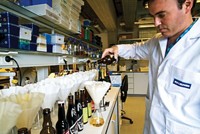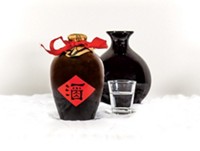Advertisement
Grab your lab coat. Let's get started
Welcome!
Welcome!
Create an account below to get 6 C&EN articles per month, receive newsletters and more - all free.
It seems this is your first time logging in online. Please enter the following information to continue.
As an ACS member you automatically get access to this site. All we need is few more details to create your reading experience.
Not you? Sign in with a different account.
Not you? Sign in with a different account.
ERROR 1
ERROR 1
ERROR 2
ERROR 2
ERROR 2
ERROR 2
ERROR 2
Password and Confirm password must match.
If you have an ACS member number, please enter it here so we can link this account to your membership. (optional)
ERROR 2
ACS values your privacy. By submitting your information, you are gaining access to C&EN and subscribing to our weekly newsletter. We use the information you provide to make your reading experience better, and we will never sell your data to third party members.
Analytical Chemistry
Newscripts
Old-fashioned brewing and an easy way to age hard liquor
by Manny I. Fox Morone
March 20, 2017
| A version of this story appeared in
Volume 95, Issue 12
A good old-fashioned beer

Any seasoned home brewer will tell you that it can take a while to perfect a recipe. Five thousand years after one recipe’s heyday, Stanford University students are still working it out.
Li Liu, a Stanford archaeologist, teaches a course titled “Archaeology of Food: Production, Consumption & Ritual.” This year, students got to re-create a boozy beverage based on Liu’s research on Neolithic Chinese artifacts. Liu says that’s what archaeology is all about: “You’re not just reading books.”
Starting in 2012, Liu, Jiajing Wang, and coworkers investigated the composition of residue scraped from millennia-old pottery found in Xi’an, China. These fragments of pottery stoves, wide-mouthed pots, funnels, and narrow-necked vessels piqued the archaeologists’ interest because the shapes and styles of the vessels suggest three stages distinctive to the beer-making process: brewing, filtration, and storage, the team claims. They published the list of the brew’s likely ingredients last year (Proc. Natl. Acad. Sci.USA 2016, DOI: 10.1073/pnas.1601465113).
Ion chromatographic analysis showed that the residue contained oxalate, which the archaeologists attribute to beer stone—sediment composed of primarily calcium oxalate that collects on the surfaces of brewing equipment. Plant material, however, was too degraded after 5,000 years to identify other ingredients using cells or DNA. Instead, the researchers sifted through microscopic starch particles and mineral structures called phytoliths, which are found in plants and can stay intact for thousands of years, to try to match their shapes with those of modern-day species.
So if you want to make beer the way they used to, your shopping list might include the following: millet, barley, and Job’s tears—also known as Chinese pearl barley—all of which fill the usual role of grains in beer. You would also need roots and tubers from snake gourd, yam, and lily plants, which add more starch and might have imparted a sweeter flavor to the brew. Whether Neolithic people in China added yeast or whether they relied on airborne yeasts and enzymes in the plant material was not clear from the analysis.
When making their brews, Liu’s students could choose their own combination of grains, which they sprouted, milled, heated, and finally left to ferment. After a week, the students’ jars developed a moldy coating and a range of odors. One student remarked that her beer had a fruity smell and a citrusy flavor. But Liu tells Newscripts that the brews were “a bit sour, with low alcohol level,” and ultimately, “I cannot say I like it.”
A sound approach to aging spirits?

According to the U.S. Alcohol & Tobacco Tax & Trade Bureau, if a wine spirit wants to be called brandy, it has to have been “stored in oak containers for a minimum of 2 years.” But if you can’t wait that long to get your fix of that sweet, sweet nectar, researchers at the University of Cádiz might have the thing for you.
The scientists have developed an accelerated technique that ages spirits in only a few days. The process involves pumping wine spirits through a tube containing oak chips and pulsing the tube with ultrasound (Ultrason. Sonochem. 2017, DOI: 10.1016/j.ultsonch.2016.11.031). The ultrasound waves create bubbles in the liquid that collapse with enough force to rupture the cell walls of the oak, releasing flavor compounds such as vanillin and furfuraldehyde.
After just three days of accelerated aging, eight trained judges reported that, in general, the ultrasound treatment gave the spirits better looks, smells, and tastes. Sounds good, but the judges compared the ultrasound-aged samples with unaged spirits rather than with commercial brandy, and that feels a little off.
Manny I. Fox Morone wrote this week’s column. Please send comments and suggestions to newscripts@acs.org.




Join the conversation
Contact the reporter
Submit a Letter to the Editor for publication
Engage with us on Twitter